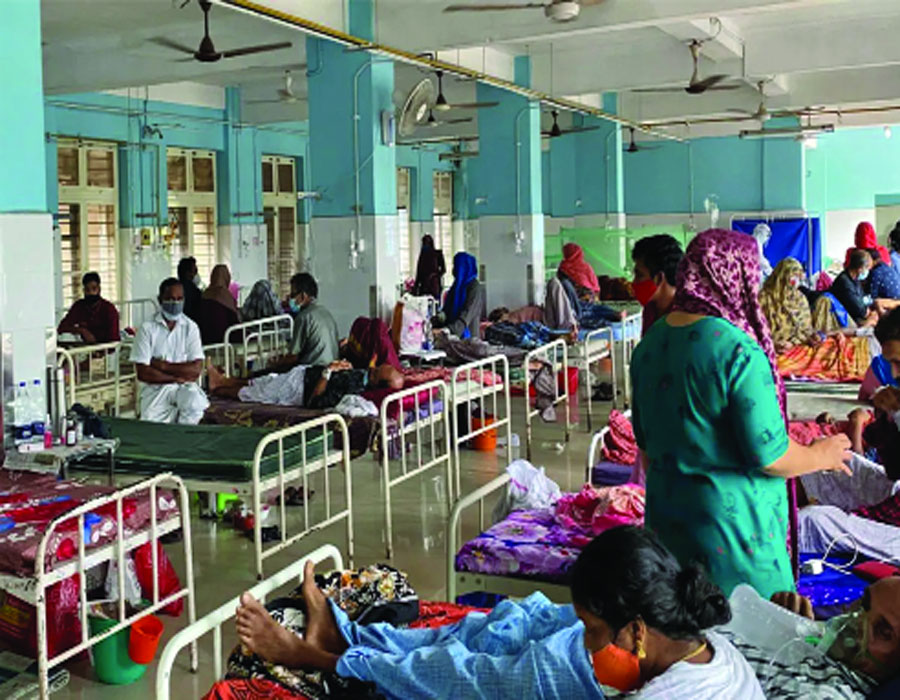How to deal with student suicides?
Thursday, 14 April 2022 |
Brijender Singh Panwar

Need to remove stigma associated with mental health problems
As per the National Crime Records Bureau (NCRB),suicides in India rose to an all-time high of over 1.5 lakh in 2020. The trend seems to have picked up during the last two stressful and anxiety filled years of the COVID pandemic. Murder and suicide rates are similar throughout the world, conflict zones and drug-mafia-ridden Latin America being exceptions.

Need to remove stigma associated with mental health problems
As per the National Crime Records Bureau (NCRB),suicides in India rose to an all-time high of over 1.5 lakh in 2020. The trend seems to have picked up during the last two stressful and anxiety filled years of the COVID pandemic. Murder and suicide rates are similar throughout the world, conflict zones and drug-mafia-ridden Latin America being exceptions.
In India, people are five times more likely to take their own lives than be murdered.
While systems are in place in the form of law enforcement agencies, prisons and judiciary to prevent heinous crimes, lack of resources and willpower hamper effective mechanisms to deal with the problem of suicides.
The issue of suicide, especially amongst the youth, was highlighted in the recent session of Parliament when Bhujan Samaj Paty (BSP) MP Danish Ali raised the issue of suicide committed by three students of Teerthankar Mahaveeer Private University, Moradabad, Uttar Pradesh. The Education Ministry said the UGC had informed that Central Universities had reported 24 suicide cases of students from 2017 to 2022. Records are not up to date and so the reasons remain unknown.The government was not willing to commit itself to rectifying the situation.
Minister of State for Education RajkumarRajan Singh said: “We take every case of students death seriously. However, education being in the concurrent list, the state has to also share the responsibility.”
The pertinent question is why so many student suicides are reported from reputed institutions like IITs and Central Universities?
The answer lies in the mental and emotional pressure being faced by the students today. They have to face intense competition at an early stage of life. The expectations of the parents are too high. The trauma starts from seeking admission to nursery class, scoring high marks, topping board examinations, securing admission in professional courses and competing for highly paid jobs. Although the Government is spending lot of money on education, the concept of career counselling is virtually absent.
Either the students are clueless about their career choices or their preferences are rarely considered by parents. Often, parents impose their choices on their wards. There is a rat race to get their children admitted to IITs and Medical Colleges.
The business of coaching classes is thriving across the country. Hordes of children join them. When they fail to get admission, they fall into depression and that leads some of them to take the extreme step of committing suicide. Even those who get admission in premier institutions are so drained out that at times they fail to cope with the rigorous schedule of studies and commit suicide out of frustration. The positive side is that the problem of suicide is getting attention at present and statistics on suicides are being generated on a regular basis to understand the gravity of the situation.
The first commendable step which the government has taken was decriminalisation of suicide through the Mental Healthcare Act,2017.
The second positive step was recognizing its responsibility of providing medical care and rehabilitation to persons with suicidal tendencies.
However, in India, the awareness about psychiatric issues is low. The social stigma attached to psychiatric fallouts like depression and substance abuse remains high and prevents the patients from accessing medical care. There is acute shortage of psychiatrists and counsellors to cater to the demand of the suffering people.
The health facilities required for huge the patient load are also insufficient. There is a need to spread awareness amongst the parents and students by providing career counselling and family therapy.
(The writer is a senior journalist and Chairman, Panwar Group of Institutions, Solan, Himachal Pradesh. The views expressed are personal.)
(The writer is a senior journalist and Chairman, Panwar Group of Institutions, Solan, Himachal Pradesh. The views expressed are personal.)